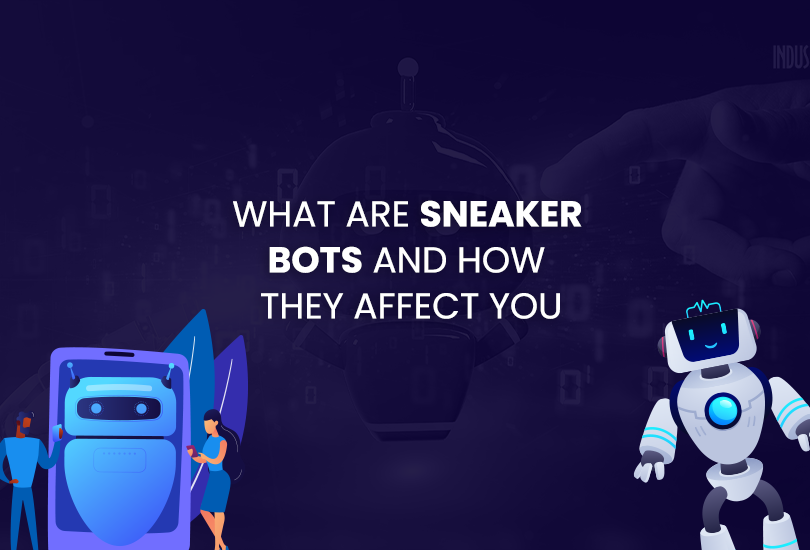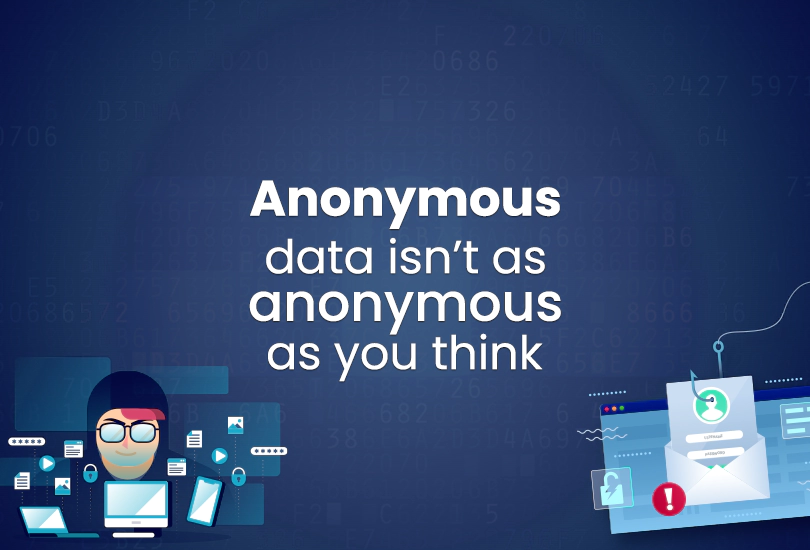Cyberattacks and hacking incidents have increased significantly in the past few years, necessitating increased awareness and cybersecurity measures. Hackers and cybercriminals use innovative and novel ways to target unsuspecting victims for financial gain or ulterior motives.
The increasing frequency of cyberattacks and the presence of cybersecurity threats entail that people increase their awareness of various techniques for cyberattacks and fraud. The importance of awareness increases when perpetrators attempt to gain trust and information from victims using techniques like pretexting. People need to know what is pretexting in cyber security to prevent data theft and intrusion.
Pretexting, an advanced form of social engineering, involves perpetrators fabricating a situation or pretext to obtain the trust and confidence of their targets. By employing this deceptive strategy, they can acquire sensitive data, gain unauthorized entry, or cause other adverse outcomes for victims.
With the digitization of personal and corporate assets, it is now more important than ever to understand what is a pretexting scam and its repercussions. The continuous evolution of cyber threats means that pretexting remains a prominent tool in the cybercriminals’ repertoire, especially when people are unaware of what is the purpose of pretexting. Therefore, examining this technique is essential for individuals and organizations striving to safeguard their data.
This article aims to provide an in-depth analysis of the mechanisms underlying pretexting and evaluate what is pretexting and how is it used in social engineering. It will investigate what is pretexting scams and analyze approaches to minimize these risks.
What is Pretexting?
Pretexting refers to a strategy employed by an assailant to manipulate an unsuspecting target into divulging sensitive information by fabricating a convincing story or persona. This approach is frequently intertwined with the more extensive operations of social engineering, which heavily rely on psychological manipulation. Pretexting entails adopting the personas of authority or familiarity to circumvent the target’s skepticism or hesitation.
Pretexting is an exceptionally sinister method of deceit because it compels unsuspecting victims to share their personal details after trusting the perpetrator. Pretexting involves creating a persona through social engineering while influencing an unsuspecting victim to trust perpetrators by perceiving their authority or credibility.
For example, people posing as bank representatives can compel unsuspecting bank customers to divulge sensitive details when they contact from a number or address resembling official communication channels.
What is the Purpose of Pretexting
The primary intent or purpose of pretexting is to establish a foundation or basis for subsequent malicious activities. Pretexters do the groundwork for more sophisticated attacks, such as financial deception or the breach of secure environments, by establishing trust with the target.
Understanding what is pretexting in cyber security and its application in social engineering unveils its function as a preparatory exercise that enhances the efficacy of future cyber-attacks or malicious activities.
What is Pretexting in Social Engineering
Perpetrators achieve pretexting in social engineering through meticulous strategizing and implementation, usually on social media or other communication channels. Assailants dedicate substantial time and effort to developing a credible backstory to avoid inducing suspicion.
Pretexters can assume the identity of tech support, company representatives, or any other position that verifies their profile or persona. Verifying user information in preparation for a system update or banking information confirmation in response to alleged security threats are typical examples of pretexting in social engineering.
The perpetrators establish legitimacy through various communication channels, including emails, phone conversations, and physical documents. By employing a comprehensive strategy, the pretext effectively obscures all potential weaknesses, impeding the target’s ability to identify the scam.
What Are Pretexting Scams?
Scams involve people deceiving or defrauding their victims for money or information. Pretexting scams encompass scamming that induces unsuspecting victims to divulge or share their information with perpetrators, believing the latter’s credibility. Pretexting scams create a fake persona or event to establish credibility and influence unsuspecting victims to share sensitive data or information.
A prominent pretexting scam occurred during the 2006 Hewlett-Packard (HP) spying scandal, where the HP chairperson employed private investigators to investigate an information leak. The private investigators impersonated HP board members and journalists to obtain phone records of other board members or journalists under the guise of an investigation. The scandal highlighted how pretexting could create an illusion for people to share sensitive information.
Types of Pretext Scams
The spectrum of pretexting scams is extensive, encompassing complex corporate espionage schemes and identity theft. For example, business email compromise (BEC) frequently commences with a pretense of compromising an organization’s email system.
After gaining access, malicious actors can steal sensitive data or divert payments by assuming the identities of senior executives or financial officers. Most pretexters exploit a lack of awareness because most people do not know what is a pretexting scam.
Pretexting Methods
Culprits attempting to gain information through deceitful means use various pretexting methods. Impersonation or creating a false persona are the primary elements of pretexting because perpetrators attempt to gain information and details by impersonating someone else or portraying a false identity.
Assailants conscientiously fabricate personas corresponding to entities their targets anticipate engaging with, including IT personnel and third-party suppliers. Many perpetrators use enticement and tailgating to exploit human curiosity and courtesy, facilitating the seamless breach of physical and digital defenses.
What is Pretexting in Cyber Security?
Pretexting in cyber security involves identifying and preventing potential pretexting attacks and instances by increasing awareness and implementing stringent security mechanisms. Pretexting can adversely affect an individual or organization due to compromised sensitive data, adversely affecting security measures.
Small businesses and large corporations are exposed to substantial risks through pretexting, which takes advantage of the human element in cyber security. Its severe consequences can result in considerable financial setbacks and compromised confidential information. The efficacy of a pretexting attack is contingent upon the extent of the deceit employed, rendering its detection and prevention a challenging task.
Inexperienced personnel who fail to recognize various pretexting strategies expose organizations to heightened vulnerability. Unauthorized disclosures of financial and personal information vital to the company’s operations and reputation can lead to several adverse outcomes.
Common Pretexting Targets and Vulnerabilities
The most common pretexting targets are individuals with sensitive or confidential information in an organization, including senior executives, IT personnel, and HR divisions. Perpetrators select these individuals due to their proximity or direct access to critical financial information or assets and sensitive information related to company operations or strategies.
Pretexters frequently exploit vulnerabilities such as inadequate training, a lack of awareness, and the inherent human inclination to trust familiar or authoritative figures. Insufficient awareness and knowledge about what is a pretexting attack typically results in falling prey to the perpetrators’ ruse.
What is Pretexting Identity Theft and How to Prevent It
Gaining awareness about recent and contemporary cybersecurity threats is an excellent approach to prevent pretexting and pretexting identity theft. People should be aware of what is a pretexting attack and have adequate knowledge of how potential pretexters can impersonate others to gain access to sensitive information.
Organizations should also implement comprehensive security training and awareness programs that instruct personnel on identifying and understanding what is pretexting in social engineering. The security measure entails recognizing indicators of a pretexting scheme and conducting identity checks on those who request sensitive data.
From a technological standpoint, adopting stringent email security protocols can effectively thwart pretexters’ ruse of authenticated corporate email addresses. Companies can use domain-based message authentication, reporting, and conformance (DMARC) to prevent unauthorized access. Conversely, sophisticated cybersecurity measures such as email analysis powered by artificial intelligence are also beneficial.
Companies and individuals can also use VPNs to cloak their original identity and IP address to prevent potential attacks. Using a good VPN like OysterVPN throws off potential pretexters because they are unaware of the victim’s original location.
Additionally, comprehensive internal controls and verification procedures are also beneficial in reducing the likelihood of falling victim to these schemes, particularly for financial transactions and access to sensitive systems. Improving security protocols and raising awareness of what is pretexting identity theft is also crucial.
What is the Difference Between Pretexting and Phishing?
A comprehensive understanding of pretexting and phishing differences is essential in cyber security. Pretexting necessitates developing an elaborate backstory or persona and frequently demands increased engagement with the target to establish trust. It is a more targeted approach in which the assailant often knows the target’s identity and creates a customized deception scenario.
Conversely, phishing entails minimal user engagement and aims to spread a deceptive message to a broad audience, hoping that a few recipients will react. In contrast to pretexting, which attempts to establish rapport and lay the foundation for more extensive intrusion, phishing typically seeks instantaneous exploitation.
Trends Emerging in Pretexting
As technology advances, the strategies employed to target others and exploit vulnerabilities also progress. As artificial intelligence and machine learning use increases, perpetrators will develop more sophisticated, difficult-to-detect, and countermeasure techniques.
This includes using AI to generate video deepfakes and convincing fake voices, which can be employed in pretexting. The future threats from pretexting are especially high when people do not know what is pretexting and how is it used in social engineering.
Conclusion
The significance of recognizing and addressing pretexting in the context of cyber security cannot be overstated. The potential harm inflicted by this increasingly sophisticated form of social engineering escalates exponentially. The threat establishes itself as an impregnable menace to both individuals and organizations.
Maintaining a proactive stance toward cybersecurity practices, ensuring ongoing education to raise awareness, and implementing appropriate technological defenses are critical in countering pretexting. A comprehensive understanding of the difference and interrelationships between pretexting and phishing further strengthens an organization’s capacity to foresee and address these challenges adequately.







